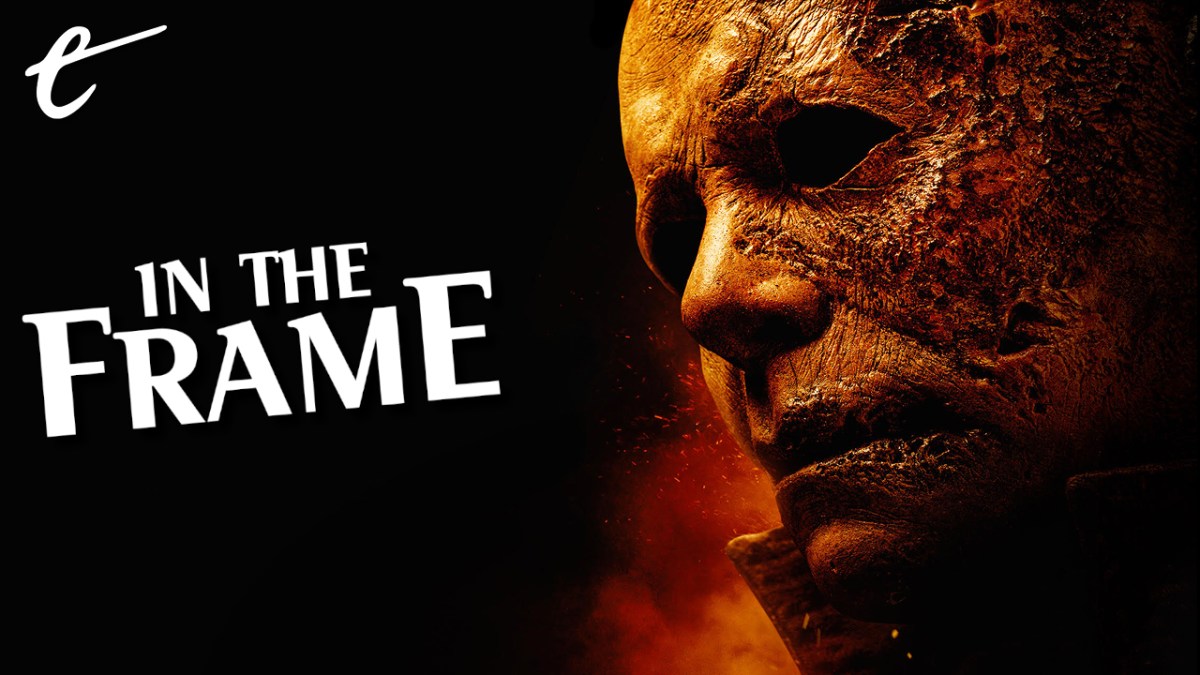This discussion contains spoilers for Halloween 2018 and Halloween Kills, in the build-up to the release of Halloween Ends.
With the release of Halloween Ends, it is as good a time as any to reflect on the previous film in the franchise. Halloween Kills is a surprisingly nasty mainstream studio horror.
In recent years, as the major horror franchises have become increasingly respectable, they’ve become considerably less grubby and less vicious than they once were. This year’s Scream is a great example, a surprisingly bloodless slasher. It’s the first Scream movie where the opening victim (Jenna Ortega) survives the attack. Murderous psychopath Billy Loomis (Skeet Ulrich) returns as a fairy godmother to his daughter Sam (Melissa Barrera).
This is worlds away from the brutality of Casey’s (Drew Barrymore) death in the original Scream or Randy’s (Jamie Kennedy) death in Scream 2. During the slasher’s heyday, it was common for sequels to begin with the murder of the previous film’s protagonist, to establish the stakes: Kristen Parker (Tuesday Knight) in A Nightmare on Elm Street 4: The Dream Master, Rachel Carruthers (Ellie Cornell) in Halloween 5: The Revenge of Michael Myers, Jamie Lloyd (J. C. Brandy) in Halloween: The Curse of Michael Myers.
Today, horror franchises are treated like any other intellectual property. They are often given a sheen of respectability at odds with the genre’s grimy sensibility. David Gordon Green’s Halloween is a case in point. The 2018 “requel” was a huge financial success for both Universal Pictures and Blumhouse. It had the biggest opening weekend in the series’s history. It became the highest-grossing film in the franchise and the genre and Blumhouse’s second highest-grossing movie to that point.
Green’s Halloween had an almost mythic quality to it. A continuity reset allowed Jamie Lee Curtis to reprise the role of Laurie Strode, following her somewhat underwhelming death at the start of Halloween: Resurrection 16 years earlier. Curtis’ return framed the movie as a long-overdue rematch between Michael Myers (James Jude Courtney and Nick Castle) and Laurie Strode, settling a score that began with John Carpenter’s Halloween in 1978.
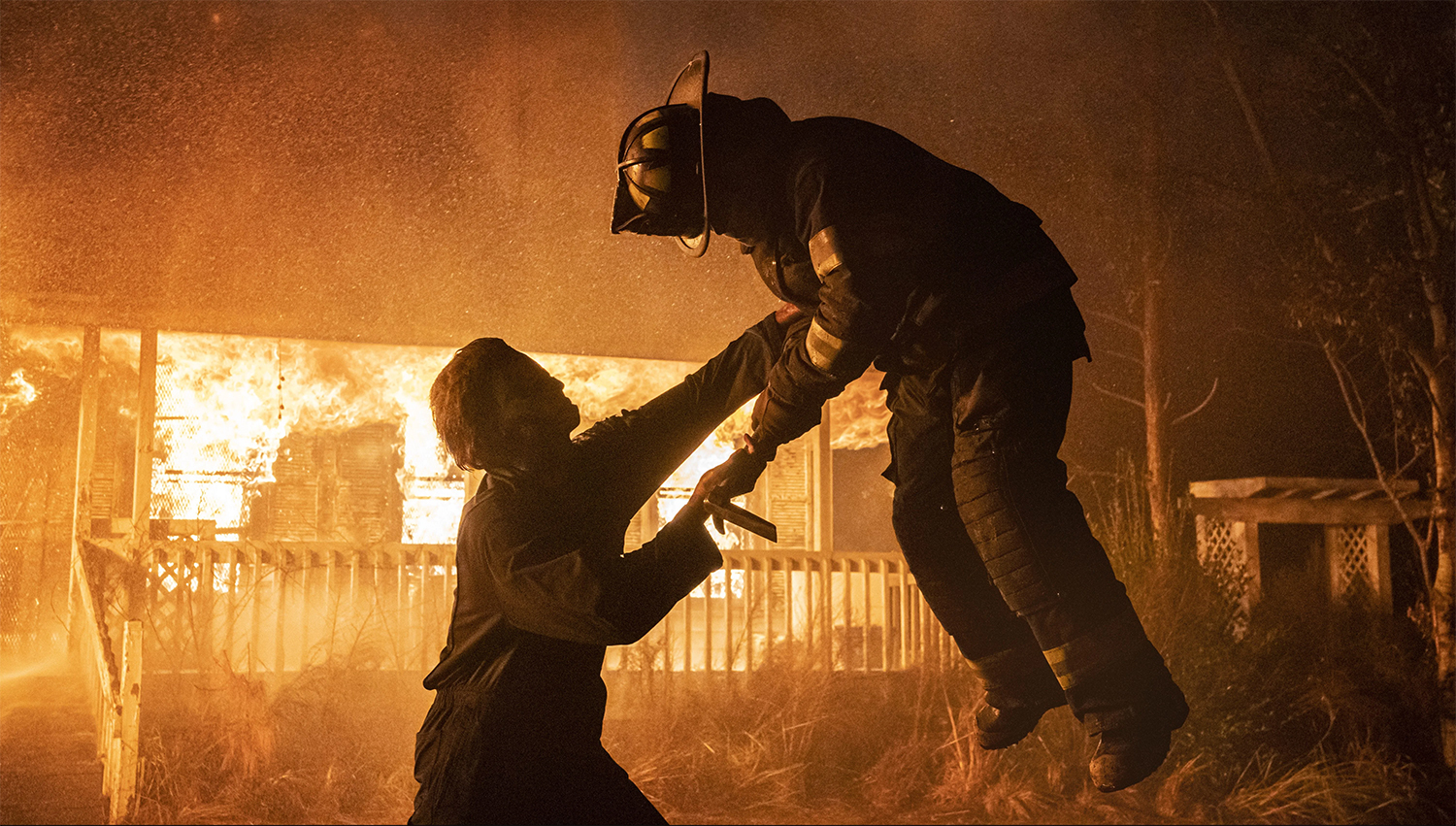
The reception was enthusiastic. Reviews were mostly positive. Green’s Halloween was framed as an empowering narrative, with one of cinema’s earliest “final girls” turning the table on her tormentor. In the third act, it is Laurie who traps Michael. Michael is even stabbed with a butcher knife. Co-star Judy Greer argued the film belonged to Laurie, contending, “Forty years later, it is her story.” The film was often framed in terms of the #MeToo movement.
Part of what is so interesting about Halloween Kills, particularly in contrast with the film immediately prior, is the way in which it feels decidedly more unpleasant. Halloween was in many ways a triumphant story about a victim being presented with an opportunity to avenge herself upon the monster who destroyed her life. Halloween Kills is a bleaker movie, one that presents its central atrocities in a way that underscores both their meanness and their meaninglessness.
The most striking thing about Halloween Kills is that the movie essentially lacks a protagonist. Laurie spends most of the movie in the hospital, recovering from the wounds that she received at the climax of the previous movie. It initially seems that Halloween Kills will follow the format of the franchise’s first sequel, Rick Rosenthal’s Halloween II. The horror movie logic is that Michael will follow Laurie to the hospital, to finish the work that he began 40 years earlier.
This is a canny play on audience expectations. Halloween II is quietly among the most influential horror sequels. It codified the idea of following the final girl and the monster to the hospital after the previous film’s events. Its influence is apparent in the extended nightmare at the start of Rob Zombie’s rebooted Halloween II, as well as in the third acts of slashers like Scream 4 and Malignant. The audience knows how this works. The hospital isn’t safe.
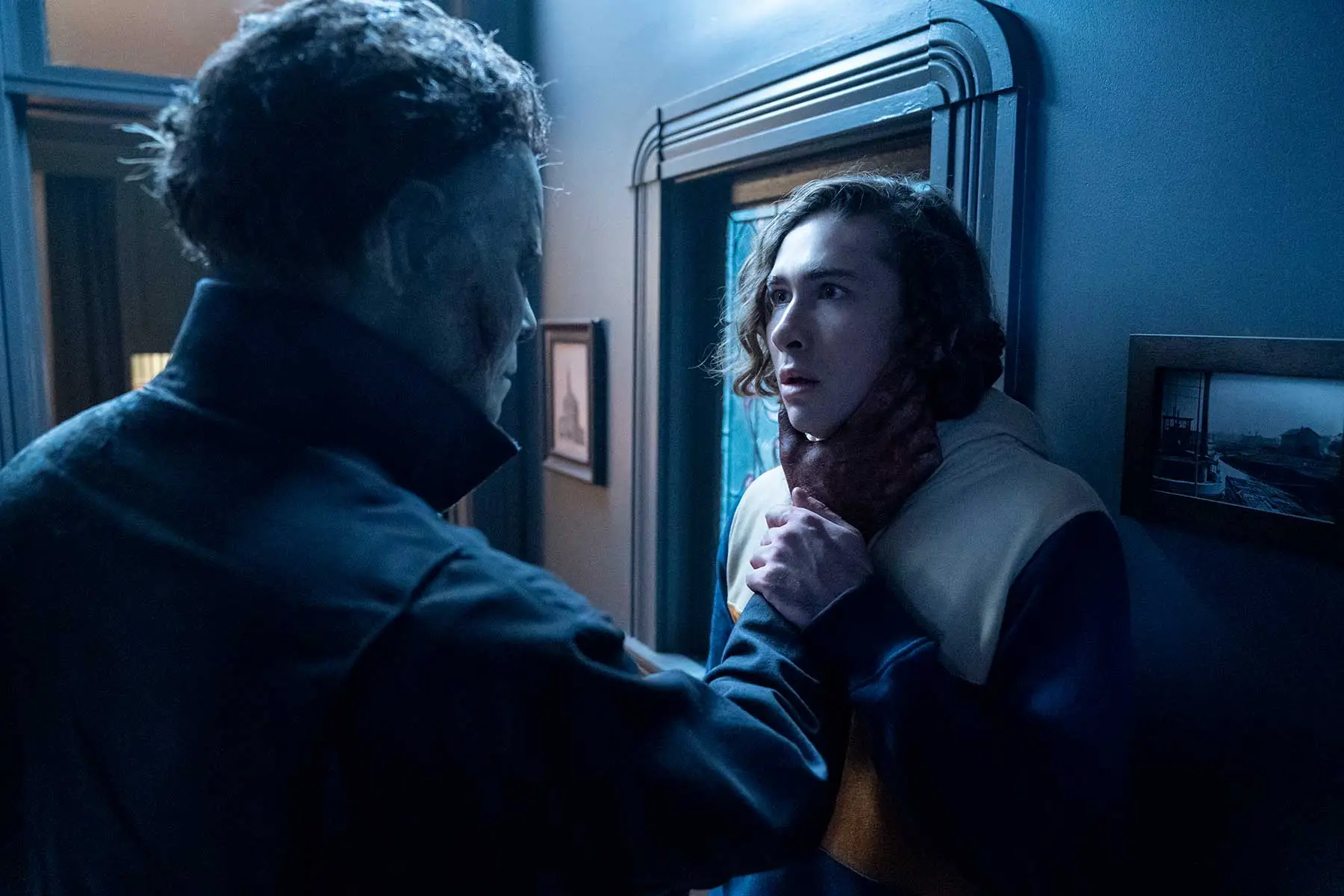
Characters within Halloween Kills operate on the same assumption. Sheriff Barker (Omar Dorsey) concentrates his officers at the hospital. “He’s coming here,” Laurie’s daughter Karen (Greer) assures Tommy Doyle (Anthony Michael Hall), another survivor of the original rampage. The expectation is that Laurie is the protagonist of this film and so exerts a gravity that will draw Michael towards her. There is the potential for a cool hospital showdown.
However, Michael never shows up. Michael isn’t interested in Laurie. The obsession has always flown in one direction, from her to him. Laurie doesn’t even appear until 20 minutes into the film. At one point, Laurie pulls herself out of bed to directly confront Michael, but she never leaves the hospital. During a panic incited by a local mob, she tears her stitches and has to be taken back to bed. Laurie isn’t the hero of Halloween Kills.
The boldest choice that Halloween Kills makes is that there are no heroes. Several of the characters in Halloween Kills believe that they are the protagonist of this story. In the opening scene, Cameron Elam (Dylan Arnold) finds Deputy Frank Hawkins (Will Patton) bleeding out in the street. “He needs to die,” Hawkins gasps. “And I’m the one that’s gonna get him.” However, just like Laurie, Hawkins doesn’t leave the hospital once he arrives.
There’s an interesting subtext simmering through Halloween Kills. The slasher genre is defined by gender archetypes, best codified by Carol J. Clover’s theory of “the final girl.” The slasher is built around the act of penetration: a knife plunged into flesh. These films are often best examined through the lens of gender. Green’s films understand this. For a Halloween party, Cameron and Laurie’s granddaughter Allyson (Andi Matichak) dress as a gender-swapped Bonnie and Clyde.

Without a protagonist, Halloween Kills doesn’t have a “final girl.” Instead, the film is built more overtly around masculine insecurity. Throughout the film, male characters are made to feel inadequate and respond through violence with terrible consequences. Cameron’s father Lonnie (Robert Longstreet) is introduced as a bullied child, who had a fleeting encounter with Michael. Cameron joins the hunt for Michael shortly after Allyson breaks up with him.
Tommy is a man who has made himself the center of attention by telling stories about Michael, convincing strangers to buy him drinks; Michael’s return lets him feel empowered. Fellow vigilante Marcus (Michael Smallwood) is introduced being chided by his wife Vanessa (Carmela McNeal), who warns him that he needs “to start standing up for (himself) in these situations.” These are men who want to feel important. They want to be heroes.
Tying to that idea of impotence, Halloween Kills is the most overtly anti-gun studio release in recent memory. Discovering that Michael is loose, Lonnie starts arming the locals. “You have a permit for all these?” Tommy asks. Lonnie replies, “Some of ’em.” Hawkins accidentally shoots his partner Pete McCabe (Jim Cummings) while confronting Michael. Vanessa shoots herself in the face. Marion Chambers (Nancy Stephens) fires her gun wildly, running out of bullets before it can be of use.
There’s a brutal cynicism to Halloween Kills. There are no heroes; there is just Michael and his victims. This is reflected in Green’s directorial choices. In slasher movies, it is fairly standard to place the audience in the perspective of the killer. Adam Hart describes this as “Killer POV.” Halloween Kills is notable for largely eschewing this genre convention. This doesn’t mean that Green completely abandons the idea of perspective shots. He just keeps the audience outside of Michael’s head.
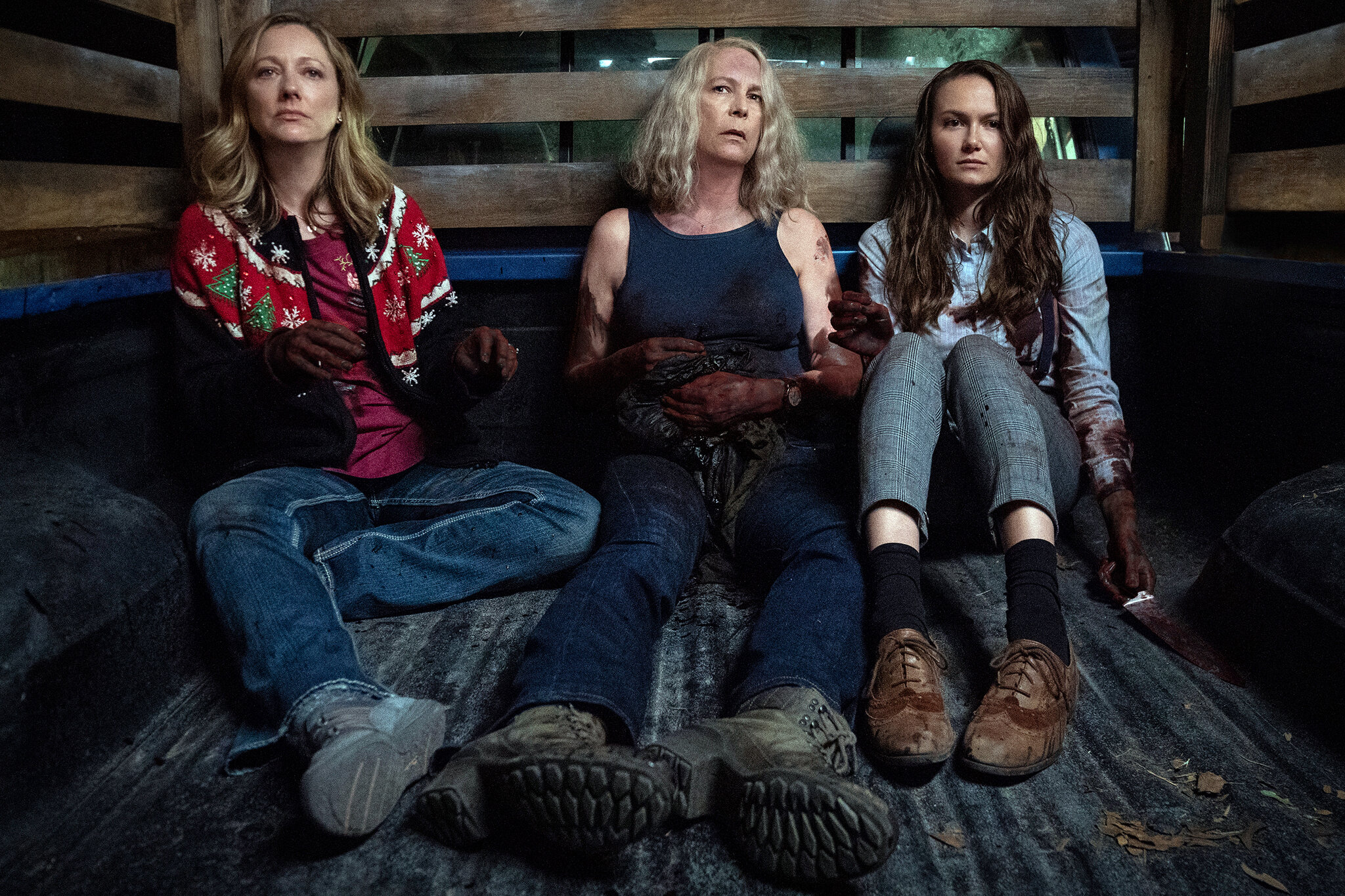
Instead, Halloween Kills peers through the eyes of Michael’s victims. Several of the film’s most striking shots are from the perspective of those affected by his rampage: a dying firefighter peering through a broken visor, Karen washing the blood from her hands, escaped inmate Lance Tivoli (Ross Bacon) fleeing into a hospital and then jumping to his death. The audience watches Michael play with the corpse of Phil (Lenny Clarke) over the shoulder of his dying wife Sondra (Diva Tyler).
Halloween Kills is built around this motif. There are lots of shots of characters considering their own reflections. Green holds on the faces of victims. There’s quite a lot of violence directed at eyes, with Michael stabbing one fireman through the eye and gouging out Big John’s (Scott MacArthur) eyes. There’s a strong focus on Michael’s victims in Halloween Kills, even those killed in the previous film, like Ranbir Sartain (Haluk Bilginer), Oscar (Drew Scheid), and Ray Nelson (Toby Huss).
It is a bold approach to a horror movie. Halloween Kills contends that Michael Myers is unknowable and inexplicable. Characters in both of Green’s films try to impose a narrative on Michael. After all, it was Sartain who brought Michael to Laurie in Green’s Halloween, to force that fan-pleasing climax. Sartain succeeded, even at the cost of his life. In contrast, Halloween Kills suggests that Tommy, Laurie, Lonnie, and Hawkins’ attempts to impose an outside narrative on Michael are folly.
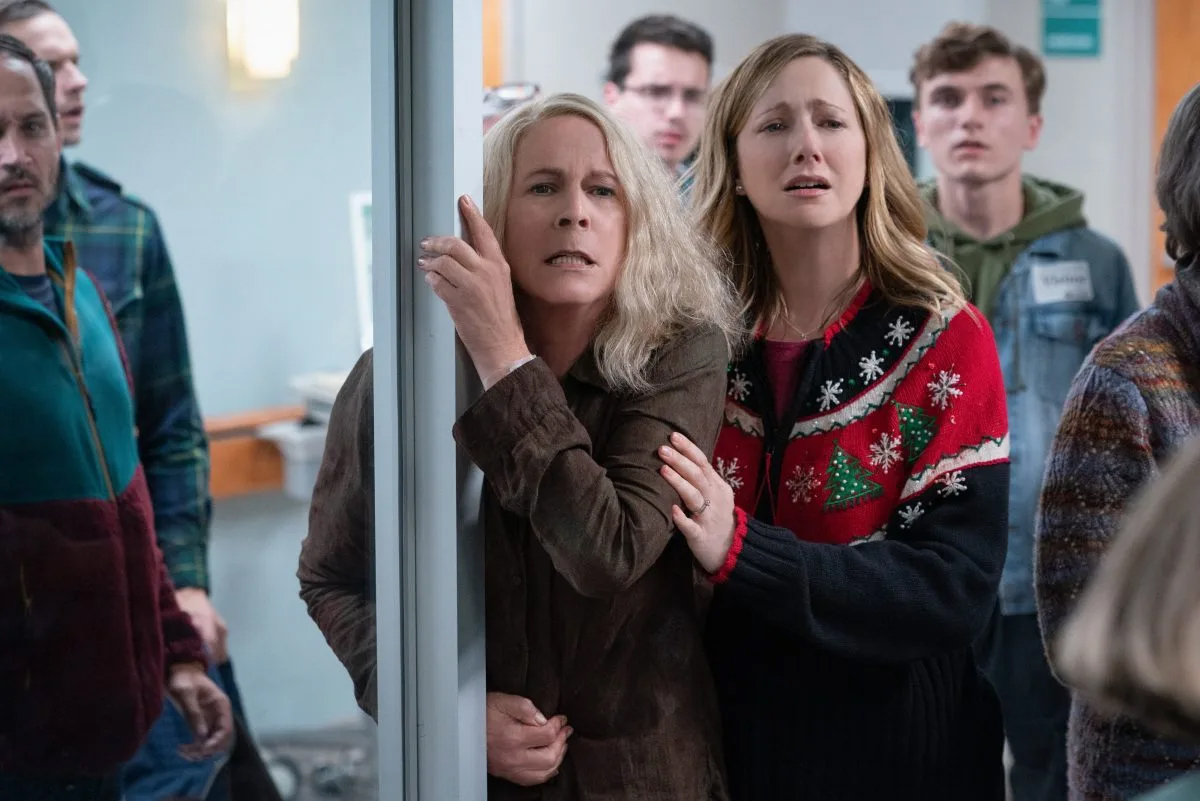
In Halloween Kills, Michael Myers can only be seen from the outside. He is truly inscrutable. His blank white mask allows others to project their fears onto him, but he is not beholden to those. While working hard to underscore the humanity of Michael’s victims, Halloween Kills is a bleakly nihilistic horror film, particularly from a major franchise. Indeed, it feels like Green only got away with this because it’s the middle film in a trilogy, between Halloween and Halloween Ends.
The most obvious narrative sleight of hand in Halloween Kills comes at the end. Having devoted the entirety of the film to demonstrating that Michael doesn’t care for Laurie at all, the film ends in such a way as to set up a potentially fan-satisfying conflict in Halloween Ends by reversing that setup. Michael kills Karen. In doing so, he becomes Laurie’s obsession. It’s a story choice that seems designed to give Halloween Ends a clear narrative drive without making Michael knowable.
It seems likely that Halloween Ends will return to the empowering and triumphant narrative framework that made Green’s Halloween such a breakout hit, with Laurie avenging her daughter’s death. Still, there is something admirable in the brutality of Halloween Kills. It is a franchise film from a major studio that builds a world in which there is no hero and no meaning, only suffering and violence. That is a truly horrifying idea.

